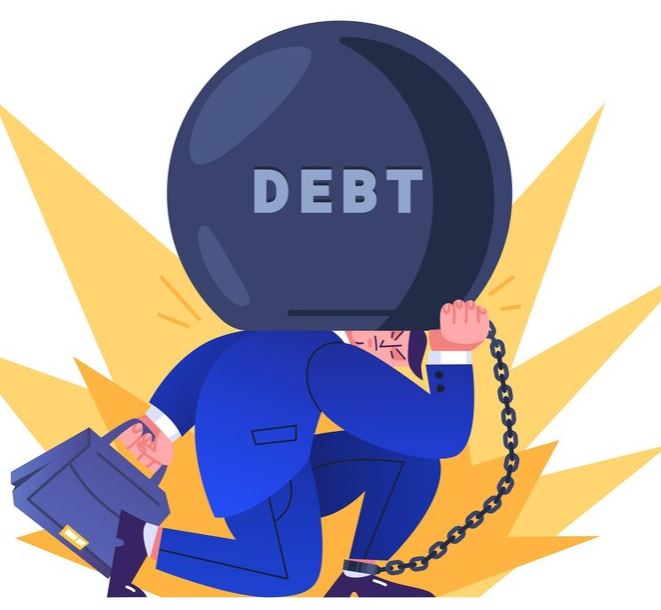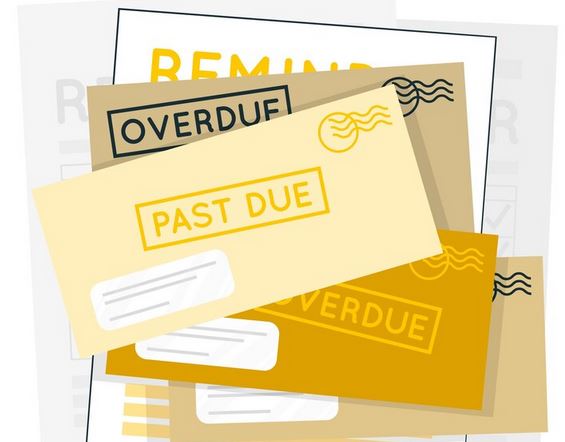Loans can be too expensive to pay, mainly because of the high interest lenders charge. As a result, it’s often hard to get out of debt. However, with the Avalanche method of paying off debt, you can pay off your debt and eventually live debt-free.
The Avalanche method allows you to pay off your highest-interest debts first as you make minimum payments on the rest. Once you clear the highest-interest loan, you move to the next and repeat the cycle until there’s no debt left.
In the long run, the Avalanche method saves you money in the form of high interest as you can pay off high-interest loans early. The biggest issue, however, is that this method can take a long time and lacks the motivation when you want to attain quick wins.
It’s also worth noting that the Avalanche method isn’t for everyone. It’s not a one-size-fits-all. It may work for some people and not for others. If you belong to the latter group, you may need to consider its alternatives, and I’ll share one with you—the Debt Snowball method.
But first, let me explain more about the Avalanche method and how you can use it to pay off your debt quickly. Here we go!

What is Debt Avalanche Method?
Debt Avalanche is a debt payment method that focuses on paying debt with the highest interest rate first. You organize all your nonmortgage debt from the one with the highest interest to the one with the smallest interest without looking at their balances.
Overall, Debt Avalanche’s goal is to help you save on interest as you pay less interest. However, that doesn’t mean it’s the cheaper way to pay the loans, as you may end up paying the loans with the highest balance last, which won’t be cheap.
However, before we can look at its pros and cons, let’s see how you can use this method to pay your debts.
How to Pay Debt Using the Avalanche Method of Paying Off Debt
Generally, you can pay off debt quickly using the Avalanche method by following these six steps:
Step 1 – List All Your Nonmortgage Debt
While ignoring the debt balance, list all your nonmortgage debt from the one with the highest interest to the least. Speaking of nonmortgage debt, we are all talking of every other debt other than the mortgage. That includes the following:
- Student loans
- Credit card debt
- Personal loans
- Medical bills
- Car loans
Remember to list the amount you owe, the interest, the minimum monthly payment, and the issuer.
Step 2 – Budget for the Debt Payoffs
Since your goal is to pay off your debt, you must Budget for it. A Budget helps you properly plan for your money and prioritize the most critical payments, including debt payoffs.
Step 3 – Make Minimum Payments
Make minimum payments on all your outstanding nonmortgage debts except the one with the highest interest. You’ll handle that in the next step.

Step 4 – Tackle the Highest-Interest Debt with Vengeance
Your goal is to pay off the highest-interest debt as soon as possible. So, you’ve got to attack it with vengeance. You’ll need to free some money or make some on the side to do it. Here are some ideas to help you get some extra cash that you can use to attack your debt:
- Use any bonuses, cash gifts, and salary raises to pay the debt
- Work overtime to earn extra income and use it to pay your debt
- Sell something you no longer need or can do without and use the money to pay your debt
- Start a side hustle such as a small business to earn some extra income, which you can use for debt payoffs
- Become an online freelancer and allocate some of the payments for debt payment
- Pause investing and use the money to pay your debt
Step 5 – Move to the Next Highest-Interest Debt
Once you pay off the first highest-interest debt, tackle the next one. The approach is similar to the first one—you start by paying off the minimum balances and then channel all your financial effort to clearing the highest-interest debt.
Step 6 – Continue Paying Your Debts Until the Last
You stop paying your debt when you have none left. Using the above tips, continue attacking the next highest-interest debt until there is no more debt.
Debt Avalanche Method Example
Let’s consider a scenario where you have the following debts:
- $2,500 car loan @4% interest
- $5,000 student loan @5% interest
- $10,000 credit card loan @18% interest
- $10,000 personal loan @14% interest
- $20,000 medical bills @15% interest
If that’s the case, here’s how to go about paying your debt using the Avalanche Method:
- First, list your dent from the one with the highest interest to the one with the lowest interest, as shown in the table below:
| Debt | Debt Balance | Minimum Monthly Payment | Monthly Interest |
| Credit Card Debt | $10,000 | $100 | 18% |
| Medical Bills | $20,000 | $200 | 15% |
| Personal Loans | $10,000 | $100 | 14% |
| Student Loans | $5,000 | $50 | 5% |
| Car Loan | $2,500 | $25 | 4% |
| Total | $47,500 | $475 | – |
- Now, pay the minimum monthly payment for all debts apart from credit card debt.
- Pay the minimum monthly payment ($100) for credit card debt and then attack the debt balance ($10,000) with a vengeance. Depending on how much money you have, this may take you one or several months.
- Once the credit card debt is no longer present, pay the minimum monthly payment for all the other debts except medical bills.
- Attack medical bills with a vengeance, similar to how you did with credit card debt.
- Continue attacking the highest-interest debt with a vengeance as you make minimum payments for the rest until you clear all your debt.

Debt Avalanche Method Pros and Cons
Debt Avalanche has its fair share of advantages and concerns. Let’s highlight them briefly:
Pros
Here are the pros of using the Avalanche method of paying debt:
- Saves on interest—Since you focus first on the debt with the highest interest and continue with the trend until you pay the last debt, you save on interest payments in the long run. Debt Avalanche generally allows you to pay your most expensive debt (in terms of interest) first, and that’s important when you have multiple debts. However, some have higher interest rates than others.
- Ideal for multiple debts with varying interest rates – In case you are dealing with different types of debts with varying interest rates, Debt Avalanche may be a good option. Of course, it’s not the only debt reduction strategy, but it can help you tackle multiple debts progressively.
Cons
Here are the cons of using the Avalanche method of paying debt:
- Takes longer – Frankly, it takes longer to get out of debt using the Avalanche method. In most cases, the highest-interest debt is often the most considerable balance, which takes time to pay. So, it may be a while before you can clear the first debt. You generally need patience to pay your debt using Debt Avalanche successfully.
- Lack of motivation—Since clearing one debt using the Avalanche method takes time, it becomes easy to lose motivation to continue paying your debt. That’s unlike the Debt Snowball method, which we shall review.
- Requires minimum payments – Well, as much as you’ll be tackling the debt with the highest interest with a vengeance, you also have to pay the minimum balance for the rest. That means you need regular income to keep up with the debt payment.
Debt Snowball Method Vs Debt Avalanche Method
Debt Avalanche and Debt Snowball are arguably two of the most popular debt reduction strategies. Even though these two debt payment strategies differ, some people confuse them.
Here’s how the two compare:
Working Principle
Well, Debt Snowball requires you to pay your nonmortgage debt from the one with the smallest balance to the one with the highest, regardless of the standing interest rate. On the other hand, Debt Avalanche requires you to pay your debt from the one with the highest interest to the one with the least.
In Debt Avalanche, you make minimum payments for all your debt except for the one with the highest interest, which you attack with a vengeance until you clear it. Debt Snowball also requires you to pay the minimum balance for all your nonmortgage debt except one (the one with the lowest balance). You must also attack the debt with the lowest balance with a vengeance.
Time and Motivation
The fact that Debt Snowball requires you to pay your nonmortgage debt from the one with the lowest balance means you clear it quicker. The small wins turn into motivation. You become more pumped up to tackle the next smallest debt and the next one until you are no longer in debt.
Sadly, you have no advantage when paying your debt using Debt Avalanche. With Debt Avalanche, it takes time to clear the first debt as it’s often an option with a larger balance. Since the wins take time, it’s easy to be demotivated. You need patience to continue paying your debt using Debt Avalanche, which most of us don’t have.

Saving on Interest
In terms of interest, Debt Avalanche saves you from paying a huge interest since you pay your most expensive debt first. Debt Snowball doesn’t do that. You may pay more in terms of interest if the highest-interest debts have the largest balance.
But again, since you get to celebrate smaller wins, which may fuel you to tackle more enormous debts and get out of debt quicker, you’ll still save on interest.
Suitability
Debt Avalanche and Debt Snowball are best suited to individuals with multiple loans. They are also ideal when you have a more regular income, which you can use to pay the minimum monthly balances.
The difference is that Debt Avalanche is best when the difference between the interest rates is vast. On the other hand, Debt Snowball is best when the difference between the interest rates is slight.
Below is a table breakdown of the difference between the two deb payment methods:
| – | Debt Avalanche | Debt Snowball |
| Working Principle | Focuses on paying the debt with the biggest interest first | Focuses on paying the debt with the most considerable balance first |
| Time | Often take longer to pay your debt | Often take a shorter time than Debt Avalanche |
| Motivation | Lack motivation | Each small win motivates you to tackle the next huge debt |
| Interest Saving | Saves on interest in the long run | May not save on interest |
| Suitability | It is best for multiple loans whose interest rates have a wide gap | It’s best for multiple loans whose interest rates are pretty close |
Concluding Thought:
Now you know how to use the Avalanche method of paying off debt. As shared, you can use this method to pay your debt, starting with the ones with the highest interest. However, considering that you don’t get to celebrate small wins, which may demotivate you, you may want to consider Debt Snowball. It allows you to enjoy smaller wins, which motivates you to continue tackling your debt.







